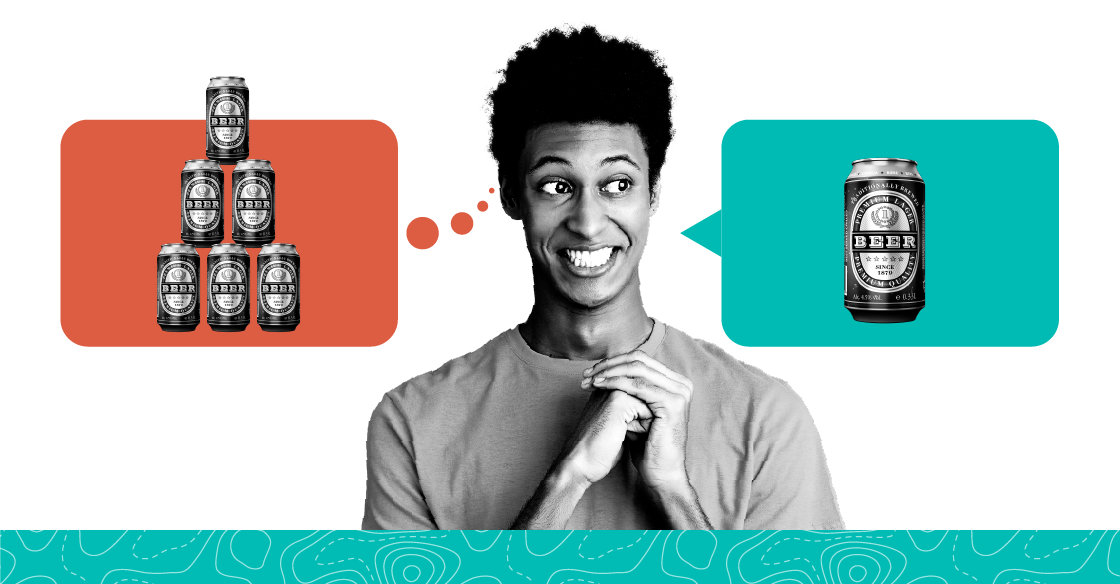
Getting the Unvarnished Truth

So the doctor asks, “How many alcoholic beverages would you say you have each week?”
Awkward pause.
Large-scale studies show that four of every five Americans withhold essential information from their doctors – information that could prove crucial to their health.
For questions related to topics such as smoking, exercise, drinking and the number of sexual partners, at least one-third admit to giving answers that are not exactly true.
Men tend to do it more, especially when it comes to alcohol consumption. Women are more likely to lie about sexual partners.
Why would patients lie about something so imperative? Many stated embarrassment as reasoning, while others gloss over how bad symptoms are in an underlying effort to avoid negative consequences. Still, others may simply wish to present themselves in a better light, such as being more dutiful or compliant than they actually are. It is a complex and collective web of reasoning, excuses, justifications, and calculations running through our synapses until we arrive at our answer. But is it the unvarnished truth?
Doctors know this and assume they are being lied to in one-third or more of patient visits.
Guess what? This also happens in research studies.
In the research arena, the very human tendency to seek acceptance and validation has the same effect. People participating in research want to be heard — they don't want to be futile, because of that, they tell researchers what they think they want to hear.
After all, it's a lot easier to agree than to disagree, even when talking to a stranger. But the bottom line is that hearing "this works great!" is never a useful insight — especially in the world of behavioral design research.
WHAT IS DESIGN RESEARCH?
Design research plays a role in every stage of the business. When companies look to design experiences, create/change digital and physical products, market new brands, build new workflows or even shift workplace culture, there is always a question or problem to be explored.
Design research brings curiosity and creative problem solving from social sciences, design thinking, and business strategy & innovation together. Teams leverage multiple methodologies depending on the stage of the project or the scope of the question with a common goal: conducting behavioral research to identify and clarify the best way forward for the brand, product or business. Design research may help us with different types of projects, for instance, to improve or launch a product, iterate on a concept, explore a projected future, refine or operationalize a process, or even clarify our value proposition and brand story.  Since design research informs so many business decisions, the human nature component of “fudging of the truth” can be highly problematic. With so much at stake with both qualitative and quantitative research, how can one most effectively explore what users REALLY think, and not just what they think you want to hear?
Since design research informs so many business decisions, the human nature component of “fudging of the truth” can be highly problematic. With so much at stake with both qualitative and quantitative research, how can one most effectively explore what users REALLY think, and not just what they think you want to hear?
 As the late Canadian-American psychotherapist, Nathaniel Brandon said, “The first step toward change is awareness.” Knowing this is how the human brain works means you can take steps as a researcher or research client to optimize the situation to mitigate skewing the data and get to the unvarnished truth. Any project design has to enact proactive strategies to ensure you are not ONLY listening for what users say at face value.
As the late Canadian-American psychotherapist, Nathaniel Brandon said, “The first step toward change is awareness.” Knowing this is how the human brain works means you can take steps as a researcher or research client to optimize the situation to mitigate skewing the data and get to the unvarnished truth. Any project design has to enact proactive strategies to ensure you are not ONLY listening for what users say at face value.
First things first, know what to look for: From brand hyping and effusive praise to parroting label claims, there are a few things to watch for to gauge authenticity. But remember: a lack of authenticity coming through in a response doesn’t quite equate to intentional deception: but it IS a critical signal to the researcher to watch and listen closely, and to follow-up and probe carefully to get more information.
Four Warnings It’s Time To Drill Deeper into the Truth of the Matter:
- Walking Back a Pain Point or Downplaying a Critique
Respondents may allude to a pain point and when asked further, simply dismiss or soften their original complaint or comment. Pushing more on these areas of friction is a good way to explore the intent behind the first expression as well as the softening. Was it something the participant just felt like they should say? Was one of the statements a gut reaction they actually don’t agree with once they think about it more? Probing statements help understand if walking something back indicates an insight about a key tension or something that should not be prioritized at all in the final insights. - Self Contradiction
When a respondent has an afterthought that doesn’t match a central point they’ve already made, they’re likely portraying a facade, or at least hinting at a tension. A great example would be a statement such as, "We drink a lot of water in the house. We also drink flavored seltzer." Then the researcher points out that Mr. Pibb is in their fridge inventory and the immediate response is, "Oh, everyone drinks that all day long..." Observed actions can uncover contradictions as well (we often call these “Say-Do Gaps”). For instance, when a respondent claims they use an aromatherapy diffuser their mom bought them “all the time”, but you can SEE an inch of dust on it! - Rose-Colored Glasses
Any kind of response where everything seems to be “peachy keen” with little detail is a red flag. In these moments follow-up questions really help us uncover the origins: are we seeing active deception or are we seeing (more likely) an aspirational narrative? Rose-colored responses like these can just be their canned perception of their own feelings or an inflation of their depth of experiences which has not yet been actualized through their own first-hand knowledge. - Aspirational Posturing
People often posture, giving responses to portray a more socially acceptable version of themselves. Perceived social pressures can cause respondents to agree (or disagree) any time a subject is surrounded with some kind of moral imperative, social norm, or social shame. However, these fronts often falter upon probing and observation. People may agree verbally, but struggle to show they conform to certain practices. For example, someone who claims to recycle obsessively may know little-to-no details about where the local recycling center is located or how the local waste management company handles unsorted recycling. Aspirational posturing is common when there is a social-moral component to behaviors, especially around healthy eating, environmental practices, debt management or finances, and lifestyle statements.
Don’t Give Up the Ship! Once we accept that people may bend the truth, whether knowingly or not, we can identify potential areas for red flags. How do we proactively get participants to tell us what they really think instead of what they think we want to hear? Many are the strategies for disarming respondents so they can begin to open up honestly! With our experience in the field, we’ve put together this helpful list.
Four Strategies to Get Research Respondents Singing Like Canaries:
![]()
STRATEGY #1: INTENTIONAL REDUNDANCY If you’re reviewing a research protocol or discussion guide and feeling like “haven’t we already asked that?”... Why yes, we probably have! And that’s on purpose sometimes. Designing your research in such a way to explore the same topic through multiple lenses is often critical to capturing the right data to triangulate later.
- Find multiple opportunities in your research engagement to get your most critical questions answered
- Ask questions in different ways, so you can infer what’s happening instead of just taking responses at face value
- Make sure you are getting different types of data so you can triangulate responses to uncover the true insights: written data, video responses, creative/visual data, social interactions and even structured questions will all give you the opportunity to get a different lens on the same topic
- Create opportunities for observation: use demos and shadowing to make sure you can compare the “Say” and “Do”
![]()
STRATEGY #2: LEAD WITH OPENNESS Make sure your research is conducted with the right perspective in mind: setting the stage through rapport building and defining your researcher/participant roles early on is essential to getting honest feedback.
- Invert the status between researcher and respondent, so that they are not pressured to comply or people-please
- Assure your respondent that they’re the expert and that you’re there to listen and guide the conversation. You don't care about the specifics — there are no right answers. What you care about is the truth as they see it
- Make sure you are not bringing business jargon into the discussion: use user language and talk like the participant, not the research sponsor
- Change your roles as needed. For example, start out as the tour guide, then offer a seat in the confessional booth.
- If all else fails, encourage a different respondent mindset by simply saying, "Don't tell me it's good; rip it apart."
![]()
STRATEGY #3: USE YOUR CONTEXTUAL CLUES Ethnography is contextual and observational. Don't just listen. Observe.
- Listen for hyperbole and look for environmental cues that can back the claims
- Watch for micro-expressions and body language — is there a hint of something going unsaid?
- Make sure to document the context: what they say in a social setting (like a group discussion) may hold a very different meaning from what they say in other settings. Don’t leave that context on the cutting room floor in the analysis.
- Even when people are not trying to mislead you, they may struggle to explain what they mean, feel, or honestly think - sometimes they just need a minute of awkward silence to find their words
![]()
STRATEGY #4: BUILD IN A FUNNEL Multi-phase projects give you the opportunity to oversample in the early stages of the research, and sift down to the most open and impactful participants.
- Phase your study so you're not stuck relying on people who may not be the best candidates for your research. You can always learn something from people, but everyone is perfect for all parts of your study
- Extra time is a built-in “trap door” that gives you more options. When you find participants who cannot be freed from their inability to tell you the unvarnished truth, they are freed from the remainder of the project phases.
Finally — TRUST YOUR GUT — yes, we said it. Listen to your intuition and probe to explore more when you see/hear red flags, such as canned or stilted language, or answers that don’t match what you are observing. Remember, not everything you try will work. Ethnography is not an exact science; it’s a social science. When something doesn’t feel right, try to make a more direct personal connection that can allow the participant to give you clues about how to get them to open up which might be unique to them.
